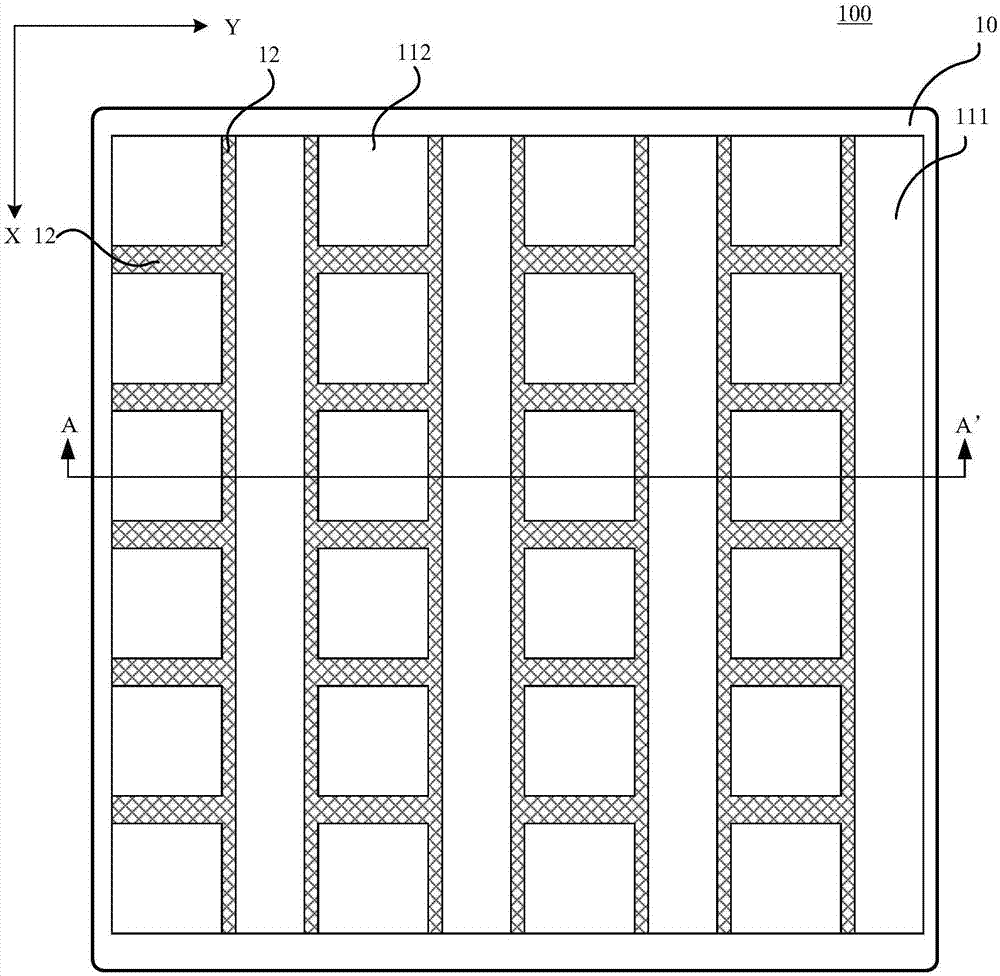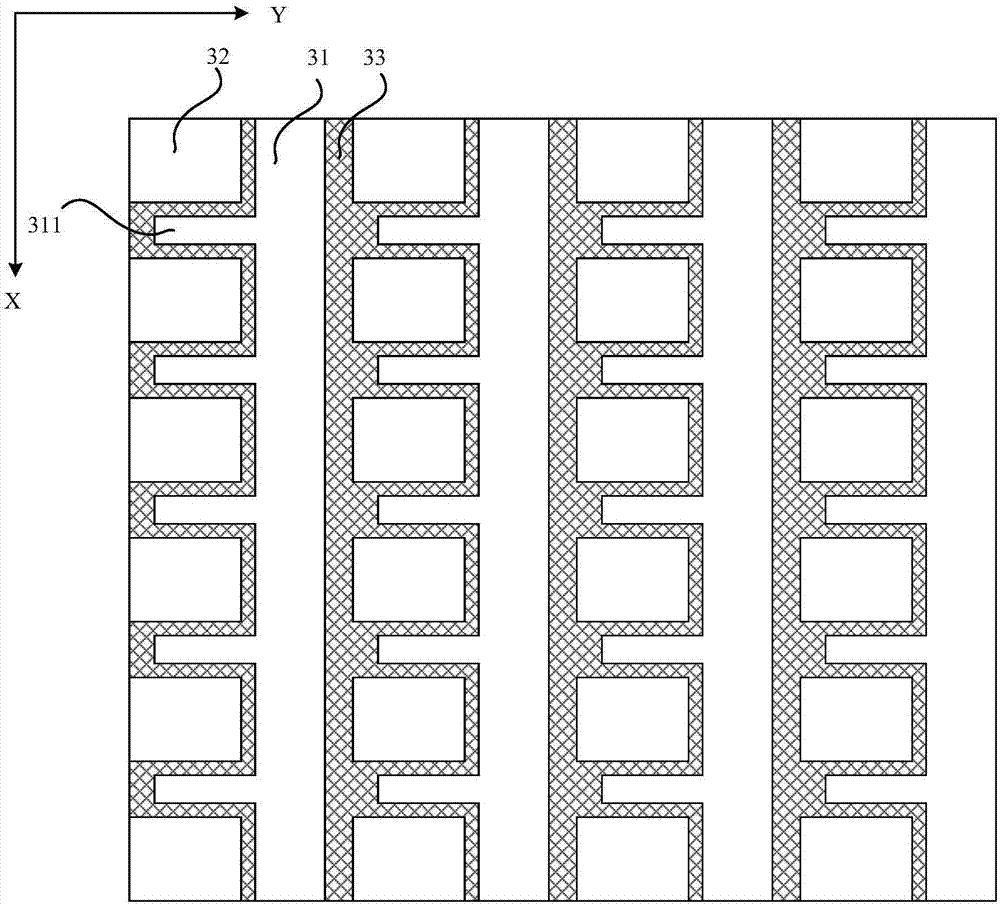Touch panel, manufacturing method and touch device
A technology of touch panel and manufacturing method, which is applied in the directions of instruments, computing, electrical digital data processing, etc., can solve problems such as complicated process, thicker touch panel thickness, and increased number of touch panel film layers, so as to improve touch control Accuracy, reduce the number of film layers, improve the effect of yield rate
- Summary
- Abstract
- Description
- Claims
- Application Information
AI Technical Summary
Problems solved by technology
Method used
Image
Examples
Embodiment Construction
[0017] The application will be further described in detail below in conjunction with the accompanying drawings and embodiments. It should be understood that the specific embodiments described here are only used to explain the related application, not to limit the application. In addition, it should be noted that, for ease of description, only parts relevant to the present application are shown in the drawings.
[0018] It should be noted that, in the case of no conflict, the embodiments in the present application and the features in the embodiments can be combined with each other. The present application will be described in detail below with reference to the accompanying drawings and embodiments.
[0019] Please refer to figure 1 and figure 2 , figure 1 A schematic structural view of the touch panel provided by the present application is shown, figure 2 shows along the figure 1 A cross-sectional view of AA' of the touch panel shown.
[0020] like figure 1 As shown, ...
PUM
 Login to View More
Login to View More Abstract
Description
Claims
Application Information
 Login to View More
Login to View More - Generate Ideas
- Intellectual Property
- Life Sciences
- Materials
- Tech Scout
- Unparalleled Data Quality
- Higher Quality Content
- 60% Fewer Hallucinations
Browse by: Latest US Patents, China's latest patents, Technical Efficacy Thesaurus, Application Domain, Technology Topic, Popular Technical Reports.
© 2025 PatSnap. All rights reserved.Legal|Privacy policy|Modern Slavery Act Transparency Statement|Sitemap|About US| Contact US: help@patsnap.com



